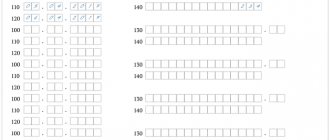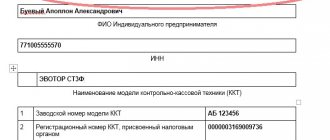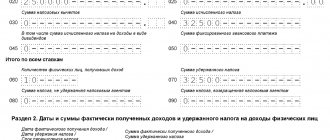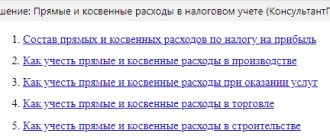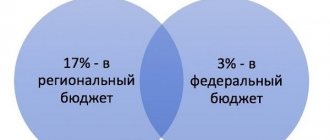In attempts to optimize taxation, companies sometimes resort to dubious schemes that are well known to the Federal Tax Service. As a result, the taxpayer receives not only additional tax assessments, but also penalties. However, there are legal ways to reduce mandatory payments. Let's figure out how to reduce income tax within the law and use these funds to benefit your business.
Legal approach
The legislation offers a whole range of tools for tax optimization - special regimes, benefits, zero rates and targeted preferences. For example, small and medium-sized businesses can switch to a simplified system. This will allow them not to pay VAT and pay tax on their income at reduced rates. However, large organizations and many medium-sized businesses cannot apply preferential treatment. They are faced with the question of how to reduce income tax under OSNO.
Tax is imposed on the difference between income received and expenses incurred in the course of business. The Tax Code strictly stipulates what constitutes income and expenses for the purposes of calculating income tax. Any amateur activity is unacceptable here - this is a direct violation of the law.
It is impossible to talk about ways to reduce income taxes without touching on the topic of gray and black optimization. The most obvious illegal practice is to attribute expenses that did not occur or to inflate the amount of expenses incurred. The Tax Service is actively and very successfully combating such violations. Therefore, in no case should you resort to this “optimization” scheme, as well as other illegal methods. Next, we will consider only legal methods.
Free tax consultation
Is it necessary to keep track of expenses with the simplified tax system of 6%?
If for legal entities the obligation to maintain both tax accounting and accounting is legally regulated, then individual entrepreneurs are required to maintain only tax accounting (subclause 1, clause 2, article 6 of the Law “On Accounting” dated December 6, 2011 No. 402-FZ, Article 313 of the Tax Code of the Russian Federation) . But there are also operations for which the law requires documentation, regardless of the organizational and legal form.
So, in paragraph 4 of Art. 346.11 of the Tax Code of the Russian Federation provides for the preservation of the procedure for providing statistical reporting and conducting cash transactions for simplifiers. In paragraph 2 of Art. 346.11 of the Tax Code of the Russian Federation provides situations in which a simplifier is not exempt from certain taxes:
- Control over a foreign company.
- Dividend payment.
- Operations with debt obligations.
- The presence of objects for which real estate tax is calculated from the cadastral value.
- Import of goods into Russia.
- Performing the duties of a tax agent.
- Interest savings and other cases from clause 2 of Art. 224 Tax Code of the Russian Federation.
In such cases, the taxpayer is required to keep documented records of both income and expenses.
In addition to the above situations, careful management of expenses with a simplified tax system of 6% can be useful when switching to OSNO, reorganizing an enterprise, its liquidation, changing a founder and other legal actions that require accurate and up-to-date data on the state of economic activity.
Write-off of losses from previous years
Not every year a company closes with a profit; losses also occur. The legislation allows them to be written off later. When submitting income tax reports, the current period declaration indicates the loss of previous years or part of it. In 2020-2021, the tax base can be reduced in a similar way by up to half. If the loss is greater, it can be carried forward to future years. Previously, there was a restriction that allowed losses to be carried forward in this way for 10 years, but now it has been removed.
It happens that losses from previous years are revealed only in the current year. They can be attributed to non-operating expenses, thereby reducing the tax base, and therefore the tax itself.
Direct and indirect income tax expenses: list
Costs are divided into direct and indirect based on their connection with production. The general procedure for such division is enshrined in Art. 318 Tax Code of the Russian Federation.
Thus, direct costs include material costs, wages of production personnel and depreciation of production assets. All other costs are indirect.
The company determines the specific list of direct expenses independently.
Read about how to do this.
Proper allocation of expenses is extremely important because the period for recognizing direct expenses is completely different than indirect expenses. This means that an error in qualification can lead to incorrect allocation of expenses between periods, underestimation of the tax base in one of them and overpayment of tax in another. That is why we did not limit ourselves to just one material on this topic.
Another article on our site is devoted to the division of costs into direct and indirect.
Looking ahead a little, we note that you should divide expenses into direct and indirect, taking into account the specifics of your activity and economic justification. Otherwise, tax authorities will recalculate the tax as they see fit, and, most likely, they will prove their case in court.
See, for example, “Rent of industrial premises may not be recognized as an indirect expense.”
Creation of reserves
An organization may provide in its accounting policies for the creation of the following reserves:
- for doubtful debts;
- for vacation pay;
- for repairs of fixed assets;
- for warranty repairs and maintenance.
This can be very beneficial for optimizing income taxes. Let us explain using the example of the reserve for doubtful debts. The company shipped the goods to customers but did not receive payment. When accounting for income and expenses using the accrual method, she generated income on the date of shipment. And since there is income, it is also subject to income tax. It turns out that there is no money, but 20% of the theoretical amount of income needs to be paid.
To avoid this, a reserve for doubtful debts is created. At the end of the quarter, you need to determine the duration of the delay. If it is more than 45 days, then half of the debt amount is taken into account. If you are overdue for more than 90 days, you can write off the entire amount.
Of course, when counterparties repay their debts, tax will have to be paid. That is, the creation of a reserve can be used to legally obtain a tax deferment. You will need to pay taxes from what you receive, not from your own funds. The advantage of this method is that during the deferment the company’s money remains in operation and generates income.
Non-operating expenses
This group of expenses includes expenses that are not related to production and sales, as well as some losses.
Read more.
One of the types of non-operating expenses that are quite often encountered in practice is interest on debt obligations, for example, on loans and borrowings. For them Art. 269 of the Tax Code of the Russian Federation provides for a special accounting procedure.
Read more about this procedure.
The current economic situation is not entirely favorable. In times of crisis, the risk of non-payments always increases. This means that the question of accounting for doubtful and bad debts arises much more often. Of course, we couldn't ignore it.
Our material “The procedure for forming reserves for doubtful debts” will help you to correctly form a “doubtful” reserve.
And about what’s new in the formation of the reserve since 2017, read the article “The procedure for calculating the reserve for doubtful debts has changed.”
We devoted a separate article to the procedure for writing off overdue receivables.
All the details - .
Acquisition and liquidation of fixed assets
If you plan to purchase transport, equipment or other similar objects, you can consider leasing. The necessary equipment will be provided by the lessor, and the company will make payments to him. Until the end of payments, the equipment will be owned by the lessor, and the organization will be able to use it in its activities.
Optimization of income tax is as follows: leasing payments are included in the cost of production and reduce the base. If you buy equipment at your own expense, then only the depreciation amount can be taken into account as expenses.
Often new equipment is purchased to replace old equipment that is subject to write-off. The costs associated with its liquidation - dismantling, dismantling, removal - can be written off as non-operating expenses in the period when the liquidation occurs. These costs also include underaccrued depreciation of written-off objects.
Trademark registration
Many organizations today spend money on a trademark. This is another good example of how you can reduce profits absolutely legally, not only by reducing taxes, but also getting benefits for business. After all, a trademark contributes to the recognition of the company, the formation of customer loyalty and protection from unfair competition.
After receiving documents from Rospatent, the trademark is registered as an intangible asset. The costs for it, provided that they amounted to less than 100,000 rubles, are immediately included in expenses and reduce the income tax base. If a trademark is more expensive, it is subject to depreciation, and its cost is reduced by tax gradually.
Methods for recognizing expenses in NU
It is important not only to correctly classify expenses, but also to determine the correct date for their inclusion in the tax base. And this date depends on which method of accounting for income and expenses you have chosen. There are 2 such methods:
- accrual method, when expenses are recognized in the period in which they are incurred, regardless of the payment period;
- cash method - based on payment.
Each of them has its own characteristics, advantages and disadvantages. In addition, there is a very clear limitation on the use of the cash method of recognizing income and expenses.
The following articles in this section will help you choose the optimal method:
- “Accrual method and cash method: main differences”;
- “What is the procedure (conditions) for recognizing income and expenses using the cash method?”
These articles are just a small part of what is presented in this subsection of our website. It is constantly updated with new relevant and useful materials. Visit it often and you will know everything about expense accounting.
Uniform
Continuing the conversation about the trademark, it is worth mentioning another attribute of the corporate identity of the organization - the uniform of the employees. This is especially true in the field of retail trade and services to the public.
The costs of manufacturing the form are included in labor costs on the basis of paragraph 5 of Article 255 of the Tax Code of the Russian Federation. And they, in turn, lower the tax base. However, for this, 2 conditions must be met:
- uniforms are provided to employees free of charge or at a reduced price;
- the employee receives it as property, that is, after termination of the employment contract there is no need to return it.
Maintaining a book of income and expenses under the simplified tax system of 6% (KUDiR)
The obligation to maintain KUDiR is provided for all simplified payers without exception (Article 346.24 of the Tax Code of the Russian Federation). Its form is regulated by the order of the Ministry of Finance of the Russian Federation “On approval of forms KUDiR of organizations and individual entrepreneurs on the simplified tax system, KUDiR of individual entrepreneurs on PSN and the Procedure for filling them out” dated October 22, 2012 No. 135N (hereinafter referred to as the Procedure for filling out KUDiR).
The procedure regulates the different design of KUDiR depending on the selected taxable object. Thus, payers of the simplified tax system of 6% are allowed in section I to fill out column 5 “Expenses” at their discretion with the proviso that these amounts must be related to the receipt of income under the simplified tax system. At the same time, clause 2.5 of the Procedure for filling out KUDiR obliges to reflect in this column:
- Expenses for jobs created at the expense of budget funds as part of the program to support self-employment of the population.
- Expenses incurred through subsidies allocated by the budget within the framework of state business support programs (clause 1 of Article 346.17 of the Tax Code of the Russian Federation).
The reference part of Section I, as well as Sections II and III, are not completed by 6% simplifications. But for tax purposes, they must complete Section IV “Expenses that reduce the amount of tax.” It must separately reflect each document, the amount of which reduces the tax payable, as well as the final estimated amount of expenses.
Marketing research
Often companies resort to the services of marketers to study the market in order to increase their sales. If such studies have not yet been conducted, it probably makes sense to think about it. Moreover, the costs for them reduce the income tax base as consultation costs.
However, this is true under one condition - such costs are justified, documented and made in order to increase income. Market research should be conducted on the products or services that the company is engaged in. If it is directed to some third-party products, then the expenses may not be recognized. The Federal Tax Service will decide that the study was fictitious and was carried out solely to reduce income tax.
Expenses that reduce the amount of income from sales.
According to Article 252 of the Tax Code of the Russian Federation, expenses are recognized as justified and documented expenses incurred (incurred) by the taxpayer.
Justified expenses mean economically justified expenses, the assessment of which is expressed in monetary form.
Documented expenses mean expenses confirmed by documents drawn up in accordance with the legislation of the Russian Federation, or documents drawn up in accordance with business customs applied in the foreign state in whose territory the corresponding expenses were incurred, and (or) documents indirectly confirming the expenses incurred. expenses.
Expenses, depending on their nature, as well as the conditions for implementation and areas of activity of the taxpayer, are divided into expenses associated with production and sales, and non-operating expenses.
According to the testimony of the taxpayer, obtained during the interrogation of the chief accountant of Karyer OJSC in accordance with Article 90 of the Tax Code of the Russian Federation - _______________________, it was established that:
1. audited organization in 2011-2013. When determining the cost of sales of finished products, materials, works and services necessary for generating a tax return for corporate income tax, the following cost groups were taken into account:
— material costs;
- wage;
— insurance premiums;
— depreciation;
- other costs.
2. calculation of the amount of material costs declared in the tax return for corporate income tax, OJSC “Karier” in 2011-2013. produced on the basis of these requirements, invoices and certificates of services performed (delivery);
3. the consumption of materials, raw materials, fuel, spare parts, inventory, etc. in production or for other economic purposes was reflected by the taxpayer in accounts 10 “Materials” and 16 “Deviation in the cost of materials”;
4. OJSC "Karier" in 2011-2013. calculated the amount of costs under the item “Wages” on the basis of timesheets and payroll calculations, orders for piecework, and work contracts;
5. information on settlements with employees of the organization for wages was reflected by the audited organization using account 70 “Payments for wages”;
6. calculation of the amount of costs from the group “Insurance premiums” declared in the tax return for corporate income tax of OJSC “Karier” in 2011-2013. carried out on the basis of data from the personal accounts of the organization’s employees;
7. expenses for settlements for social insurance, pension provision and compulsory medical insurance for the organization’s employees were reflected by the Company using account 69 “Calculations for social insurance and provision”;
8. depreciation, the data of which was reflected in the consolidated depreciation sheet, was accrued at Karyer OJSC in 2011-2013. based on information from primary documents on movable and immovable property;
9. the accrual of depreciation by the tax accounting organization was not reflected in the organization’s accounting registers: all information was entered into the corresponding summary statement for depreciation accrual;
10. calculation of the amount of expenses under the item “Other”, declared in the tax return for corporate income tax, OJSC “Karier” in 2011-2013. carried out on the basis of certificates of work performed (services rendered), surveyor's certificates, internal documents of the organization reflecting the use of crushed stone for its own needs, as well as the formation and use of a vacation reserve;
11. other expenses were reflected by the taxpayer using the following accounting accounts:
— 60.2 “Settlements with suppliers for services performed”;
— 76.3.1 “Settlements with various debtors and creditors”;
— 43 “Finished products”;
— 96 “Reserves for future expenses”;
— subaccount 97.5 of account 97 “Future expenses” (drilling and blasting operations: expenses of the previous month for blasted but not removed rock mass);
— subaccount 97.1 “Overburden works”.
Appendix No. 2/28 to the inspection report - Protocol of interrogation of witness No. 28 dated August 26, 2014.
In response to the request for the submission of documents (information) No. 2 dated 06/18/2014 (entry No. 08789 dated 07/02/2014), registers of primary documents confirming the value of the cost of sales of finished products, materials, and work were transferred to OJSC “Karier” and services for 2011-2013. with the attachment of accounting (tax) accounting registers, according to which the amount of expenses reducing the amount of income from sales was:
in 2011 – 142,473,475 rubles;
in 2012 – 196,323,183 rubles;
in 2013 – 168,770,248 rubles.
In accordance with the data of income tax returns for the period 2011-2013, submitted by the audited organization to the Interdistrict Inspectorate of the Federal Tax Service of Russia No. 2 for the Kaluga Region, the amount of expenses reducing the amount of income from sales was:
in 2011 – 145,925,728 rubles;
in 2012 – 196,323,183 rubles;
in 2013 – 168,770,248 rubles.
When comparing the indicators, it was established that the amount of expenses reducing the amount of income from sales reflected in the tax return for 2011 by 3,452,253 rubles. (145,925,728 rubles - 142,473,475 rubles) more than the amount of expenses actually confirmed by the primary documents submitted by OJSC “Karier” , including invoices, claims-invoices, certificates of work performed (services rendered), time sheets and payroll calculations, personal account data of the organization’s employees, summary statements of depreciation, surveyor’s certificates, and data from accounting (tax) accounting registers.
When asked why this discrepancy arose, Irina Ivanovna Ivanova, chief accountant of the audited organization, explained that in 2011, guided by the generated registers for calculating the cost of sales of finished products, materials, works and services, she assumes that when determining the amount of expenses that reduce the amount of income from sales, computational errors were made.
When asked whether OJSC “Karier” was in 2011-2013. costs associated with production and sales were incurred, which were not subsequently taken into account when determining the tax base for income tax, the chief accountant of the Company answered negatively, i.e. all expenses of the audited organization reflected in the registers for calculating the cost of sales of finished products, materials, works and services were taken into account when calculating corporate income tax .
Appendix No. 2/28 to the inspection report - Protocol of interrogation of witness No. 28 dated August 26, 2014.
Thus, in 2011, OJSC “Karier”, in violation of Article 249 of the Tax Code of the Russian Federation , actually incurred and not documented expenses were taken into account, reducing the amount of income from sales by 3,452,253 rubles.
For the period from 01/01/2013 to 31/12/2013.
Employee training
If the organization’s specialists periodically improve their professional level, this will only benefit the business. In addition, training expenses can reduce income taxes - they are written off as other production and sales expenses.
To do this, the following conditions must be met:
- employees sent for training are hired under employment contracts;
- The educational institution with which the agreement is concluded has the right to conduct relevant activities.
Preferential rates
The income tax rate of 20% consists of two parts. In 2021 they are:
- regional - 17%;
- federal - 3%.
For certain categories of taxpayers, federal and regional rates are set at zero. That is, such companies do not actually pay this tax. A 0% rate applies to income received:
- educational and medical organizations;
- organizations providing social services to citizens;
- participants of the Skolkovo project;
- agricultural producers and fisheries organizations.
In addition, the federal portion of income tax is zero for residents:
- free economic zone of Crimea and Sevastopol;
- port of Vladivostok;
- economic zone of the Magadan and Kaliningrad regions;
- tourist and recreational cluster and some other zones.
The regional part of the rate may be lowered by decisions of the authorities of a constituent entity of the Russian Federation for certain categories of payers. Thus, in Moscow for public organizations of disabled people, as well as those who use their labor, the regional rate is set at 12.5%.
When checking an income tax return, the Federal Tax Service may request documents necessary to confirm rights to preferential rates.
Investment deduction
From January 1, 2021, an investment deduction is in effect, which reduces the amount of income tax (not the tax base). The mechanism for its application is prescribed in Article 286.1 of the Tax Code of the Russian Federation. The conditions are:
- In the entity where the taxpayer is located, a law on investment deduction must be adopted.
- The organization must establish in its accounting policies that it has the right to apply this deduction. In order for this right to appear in 2022, it must be fixed in the accounting policy by the end of this year. In the future, this decision cannot be changed for 3 years.
- The deduction applies to facilities that have been put into operation since the beginning of 2021. Or after this date their cost was revised.
- The deduction applies to all objects that belong to depreciation groups III-VII.
- The regional part of the income tax can be reduced by up to 90% of the costs incurred by the taxpayer in connection with the acquisition, modernization or reconstruction of fixed assets. Moreover, this part of the tax must be at least 5% of the tax base.
- The federal portion of the tax can be reduced by no more than 10% of the amount of costs. There is no minimum tax established.
So, we looked at how to reduce income tax under OSNO within the framework of the law. Most legal methods come down to properly accounting for expenses. Companies should periodically review their costs. It is likely that funds will eventually be freed up, which can be used to develop the business.
Accounting for costs for suppliers using the simplified tax system of 6 percent
From the point of view of tax purposes, accounting for expenses under the simplified tax system, income of 6% fades into the background, since this category of payers can optionally not indicate them in the KUDiR. The company's costs, including those for suppliers, are not included in the calculation of the simplified tax amount.
But if, during a tax audit, documents for the purchase of goods sold are not provided, their value may be classified as goods and materials received free of charge, and the estimated tax amount will increase. This may lead to additional assessment of a simplified tax, payment of a fine (20% of the amount of underpayment, but at least 40,000 rubles) and the accrual of penalties (Article 120 of the Tax Code of the Russian Federation).
In addition to the tax office, documents from suppliers may also be of interest to law enforcement agencies in order to confirm ownership of certain valuables, as well as to the company’s clients to fulfill warranty obligations and confirm product quality.
From the point of view of accounting and management purposes, the absence of up-to-date accounting of settlements with suppliers is, in principle, impossible, since this will instantly nullify the system for calculating gross and net profit.
